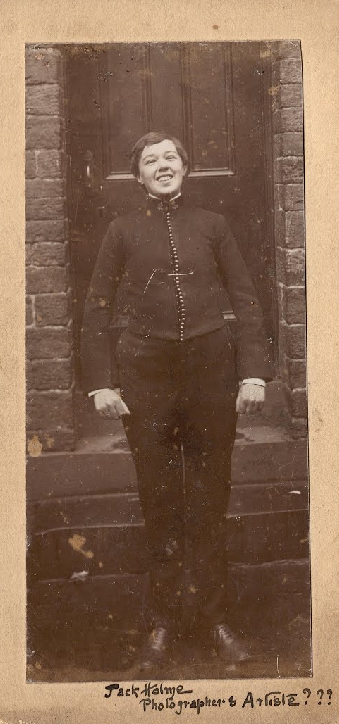Vera 'Jack' Holme
The full resource is FREE to all registered users of the website
If you are not already registered you can sign up for FREE website access to download the full resource.

- Born: 1881
- Died: 1969
- Occupation: Actor
- Claim to fame: Vera was an actor known for playing with gender identities; she was a lesbian and performed in cross-dress. She was also known for being the Pankhursts’ chauffeur.
Background
Vera was born in Lancashire and her father was a timber merchant. She had a small allowance but needed to work, and rather than the usual roles for women of that time and class, she decided to become an actor and singer. She made her name as ‘Jack’ Holme, performing a popular music hall act where she dressed as and pretended to be male.
Political activism
In 1908, she joined the Actresses Franchise League (AFL). The AFL was open to anyone involved with the theatrical profession and added much to the ‘spectacle’ of the votes for women campaign by way of entertaining suffrage plays and colourful pageants. She also joined the WSPU and, in June 1909, she famously presented the Prime Minister with a letter announcing a WSPU demonstration while on horseback. She became a recognisable figure as the chauffeur to the WSPU’s leading figures Emmeline Pankhurst and Emmeline Pethick-Lawrence, and she wore a WSPU-coloured uniform.
Along with Elsie Howey, she hid inside a musical organ in a theatre in Bristol, where there was a meeting chaired by the Liberal Party politician Augustine Birrell. During the meeting, Vera and Elsie repeatedly shouted out ‘Votes for women!’ while officials tried to find them. In 1911, Vera was sent to Holloway Prison for five days for throwing stones. She also joined the Young Hot Bloods (YHB).
When the First World War started in 1914, Vera joined the Women’s Volunteer Reserve and served in the transport unit of the Scottish Women’s Hospital (SWH). Vera fell in love with Evelina Haverfield, a fellow suffragette and member of the SWH, and the two began a relationship. They both worked to support the Serbian people during the war and Vera became administrator of the fund and home that Evelina had founded for Serbian orphans. She continued charitable work after the war.
Glossary
- The Young Hot Bloods – YHB was a secretive society within the WSPU, made up of younger members (aged under 30) who were fully prepared to undertake ‘danger duty’ for the WSPU and the cause.
- Holloway Prison – This was a women’s prison in North London where many of the suffragettes were sent and often forcibly fed.
Questions
- Why did the AFL help to spread the suffragist message?
- Why was it important to have a female chauffeur at that time?
- Why do you think so many suffragists gave up their campaigning to actively support the war effort during the First World War?
